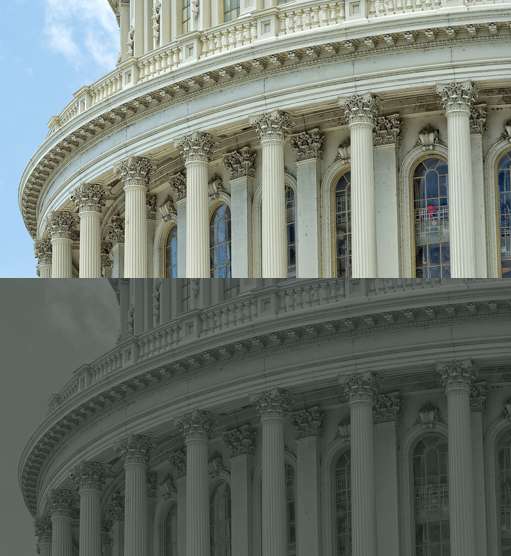Don’t Let the Actual Law Get In the Way of Your Mourning
Florida, in contrast to other states, seems to have stricter laws regarding leaving the scene of an accident. In other states, the parties engage in some meaningful criminal litigation about the intoxication and/or the culpability of the driver when a fatal “hit and run” accident occurs.
http://www.kvue.com/news/local/Sentence-could-be-given-to-Nestande-Friday-192479001.html
Florida law doesn’t allow for the lawyers to mess around with such bothersome considerations. Florida law is pretty clear; leave the scene of fatal accident and you can expect to be charged with a First Degree Felony. The maximum prison sentence the defendant can receive is thirty (30) years in length.
There’s no proof of intoxication requirement. There’s no examination as to the culpability of the driving defendant (ie: whether or not he caused the wreck is not an issue). Simply leaving the scene and the death supply the elements for the First Degree Felony.
In fact, the driver who remains on the scene and is found to be intoxicated can be expected to be charged with a Second Degree Felony (maximum = 15 years). Therefore, even when intoxicated, the law provides a 100% maximum punishment incentive to remain on scene when a driver is involved in a fatal wreck.
“But Luke! What about the Criminal Punishment Code!?!?!?!?!?” Well I am glad that you asked. The Criminal Punishment Code is a formula by which the State calculates a sentencing “floor” based on a defendant’s offense and other unique characteristics. For a driver who stays on scene and is intoxicated, the criminal punishment code will provide for a “floor” sentence of about ten and one-half (10.5) years per one death. For a driver who flees the scene and whose intoxication cannot thereafter be measured, the criminal punishment code will provide for a “floor” sentence of about nine and one-quarter (9.25) years. The vast majority of sentences imposed in Florida are criminal punishment code (“CPC”) sentences. This means that the vast majority of sentences imposed fell between the CPC “floor” and the statutory maximum for the offense.
As the law stands now, the defendant driver who remains on the scene of a fatal wreck and is found to be intoxicated is subject to a minimum mandatory sentence of four (4) years. There is no minimum mandatory sentence normally associated with leaving the scene of a fatal wreck.
So if we imaging Defendant A and Defendant B standing accused of DUI manslaughter and leaving the scene involving a death respectively…
Defendant A is looking at a sentencing floor of 10.5 years. The maximum time he could receive would be 15 years. The judge, even if he were to find an appealing basis to impose a downward departure sentence below the CPC sentencing floor, has to sentence him to four (4) years.
Defendant B is looking at a sentencing floor of 9.25 years. The maximum time he could receive would be 30 years. The judge, if presented with an appealing basis to impose a downward departure sentence below the CPC sentencing floor, could impose any sentence he saw fit.
Enter the “Aaron Cohen Life Protection Act,” this group of proposed Florida sentencing reforms, touted by friends of the late Aaron Cohen, would impose additional minimum mandatory sentences upon Florida judges. The “grass roots organization” seeks to impose new minimum mandatory sentences to eliminate the incentive to leave the scene of a serious accident.
Apparently lost on the organization is the fact that the driver who left the scene actually faces double the possible prison time compared to the driver who remains on the scene. This is straight from their website:
“This begs the question: if a drunk driver hits someone and seriously injures them – possibly even killing them – why stick around after the accident?”
http://aaroncohenlaw.org/?page/114045/read-this—the-lsa-gap-in-florida
The short answer would be that your maximum possible prison time would DOUBLE if you left the scene.
I am very sorry that Aaron Cohen was killed and the fact that the driver left the scene was horrible. However the driver who hit Aaron was apprehended. A judge, who answers to the electorate, examined the individual facts of the driver’s case and imposed a carefully-crafted sentence which he believed was appropriate.
The appalling rate of incarceration in the US has been well documented.
http://www.nytimes.com/2008/04/23/world/americas/23iht-23prison.12253738.html?pagewanted=all
Specifically, minimum mandatory sentences are frequently identified as a culprit in the exponential rise of the US incarceration rate. For years, legislators and judges have complained that minimum mandatory sentences produce unjust results and prevent judges from assessing the defendants in their own courtrooms.
http://www.suntimes.com/opinions/23184504-474/mandatory-minimum-sentencing-doesnt-work.html
The Obama Administration, at least 25 years after the calls of injustice began, has recently joined the fray.
http://reason.com/archives/2013/08/14/eric-holders-prison-break
I do not believe the decision makers can ignore the dubious claim that Florida law allows for an incentive to leave the scene of a fatal wreck. In the vast majority of cases, the opposite is true. Let’s not create additional minimum mandatory sentences, untrustworthy structures which ruin families and lives, based on the fallout associated with one unusual case.




